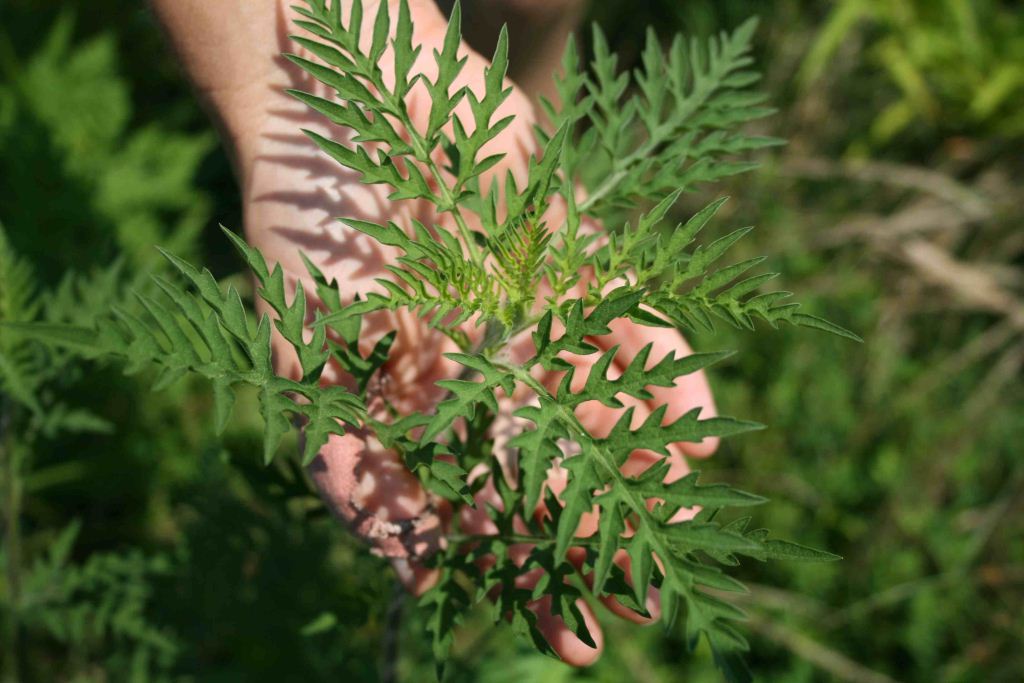Ragweed: This Foe May be a Friend Too
by Laura Schumm, Community Kitchen Garden Research Intern, Lewis Ginter Botanical Garden
Here in the Lewis Ginter Botanical Garden Community Kitchen Garden we have many rogue plants that have infiltrated our garden; we usually call them all “weeds.” One that many people are aware of is common ragweed. This plant is mostly known for causing annoying seasonal allergy symptoms, but it may also have some beneficial uses.

Ambrosia artemisiifolia or Common Ragweed has fern like leaves. This image was taken in the pre-flowering stage. photo by Brian Vick
Traditional Medicinal Uses
Ragweed is said to have many medicinal benefits; it can be used as an astringent, antiseptic, emetic, emollient, and a febrifuge (or fever reducer). Early Native American healers valued this plant for medicinal uses and took advantage of its topical and internal applications. Herbalists use ragweed to relieve nausea, menstrual discomfort, and fever, and some Native American tribes have used the root of the ragweed plant to make tea that works as a laxative. The juice from crushed ragweed leaves can be applied to insect bites or poison ivy rashes to soothe irritation. Ragweed pollen is sometimes used in natural hay fever therapies. That said, if you have a medical problem, you should consult your doctor. We don’t advise self-medicating. Also, plant identification can be tricky — as many plants look alike, so unless you are an expert we don’t recommend ingesting plants.
Ragweed as a Companion Plant
A study done by the Coastal Plains Experiment Station in Tifton , GA found that leafminers prefer ragweed (or pigweed) to pepper plants. So if you spot ragweed close to your pepper plants, consider letting it go for a while. It could help protect your peppers from those pesky leafminers. Make sure to remove the flowers before they go to seed though or you will have a raging weed war on your hands.
Works Cited
“Benefit from planting Vegetable Companions”. Penn State Extension. 23 March 2012. Web. 24 July 2012.
Evans, Judith C. “History and medicinal use of ragweed”. Helium. 22 January 2010. Web. 24 July 2012.